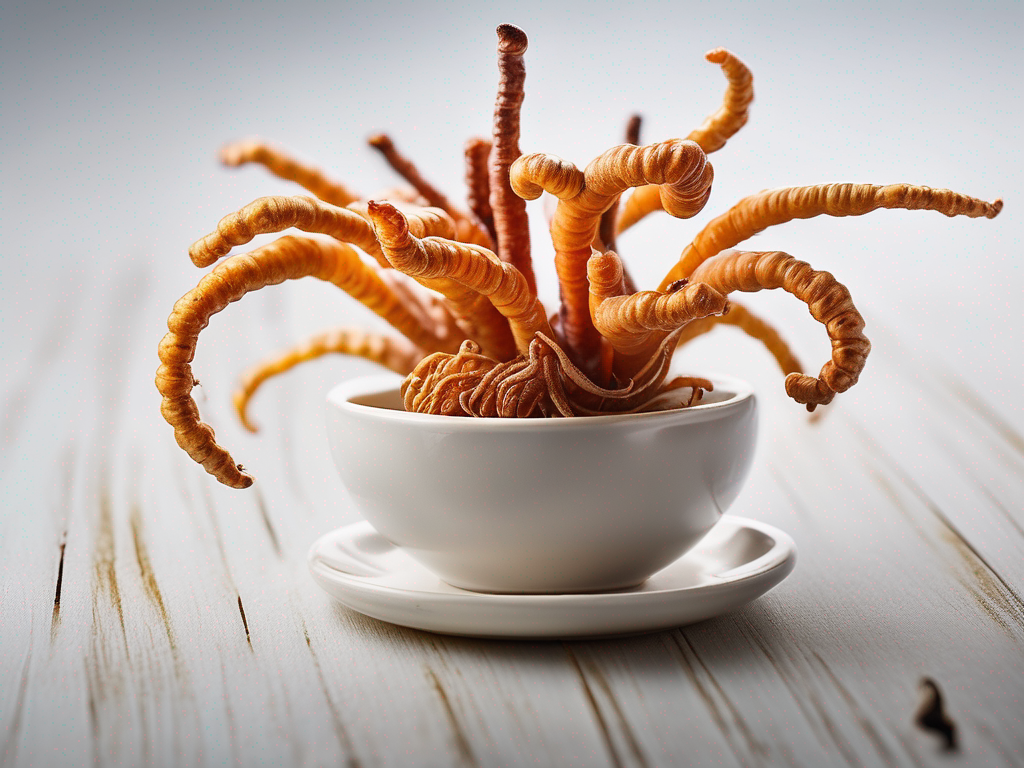
What to do with Cordyceps Mushroom that Has Turned Brown
Get Your Free Food Safety Cheat Sheet
30 most common foods with instant answers. Print it and stick it on your fridge—completely free!
What to do with Cordyceps Mushroom that Has Turned Brown
Cordyceps mushrooms are a prized ingredient known for their unique flavor and potential health benefits. However, it's not uncommon for these mushrooms to turn brown over time, which can be a cause for concern for many home cooks. In this blog post, we will discuss what causes cordyceps mushrooms to turn brown, whether they are still safe to eat, and what you can do with them if they have changed color. (Cordyceps mushroom)
Understanding Cordyceps Mushrooms
Cordyceps mushrooms are a type of fungus that grows on the larvae of insects. They have a long history of use in traditional Chinese medicine and are believed to have various health benefits, including boosting immunity and improving stamina. Cordyceps mushrooms are often used in soups, stews, and stir-fries for their earthy flavor and unique texture.
Why Do Cordyceps Mushrooms Turn Brown?
Cordyceps mushrooms can turn brown due to a variety of factors, including:
- Exposure to air: When cordyceps mushrooms are exposed to air for an extended period, they can oxidize and change color.
- Age: As cordyceps mushrooms age, they may naturally darken in color.
- Storage conditions: Improper storage, such as in a humid or warm environment, can cause cordyceps mushrooms to deteriorate and turn brown.
Are Brown Cordyceps Mushrooms Safe to Eat?
While the brown color of cordyceps mushrooms may not be visually appealing, it does not necessarily mean that they are unsafe to eat. However, it is essential to inspect the mushrooms carefully to ensure they have not spoiled. Here are some tips for determining if brown cordyceps mushrooms are still safe to eat:
How to Check the Safety of Brown Cordyceps Mushrooms
- Smell Test: If the mushrooms have a foul or off-putting odor, they may be spoiled and should be discarded.
- Texture: Check the texture of the mushrooms. If they feel slimy or mushy, it is best to throw them away.
- Visual Inspection: Look for signs of mold, discoloration, or sliminess on the surface of the mushrooms.
- Taste: If in doubt, cook a small portion of the mushrooms and taste them. If they have an unusual flavor or texture, it's best to err on the side of caution and discard them.
What to Do with Brown Cordyceps Mushrooms
If your cordyceps mushrooms have turned brown but are still safe to eat, there are several ways you can use them in your cooking:
- Sauté: Brown cordyceps mushrooms can be sautéed with garlic, herbs, and olive oil for a simple and flavorful side dish.
- Soup: Add brown cordyceps mushrooms to soups or broths for an earthy umami flavor.
- Stir-fry: Incorporate brown cordyceps mushrooms into stir-fries with vegetables and protein for a nutritious meal.
- Tea: Infuse brown cordyceps mushrooms in hot water to make a soothing and aromatic tea.
Proper Storage of Cordyceps Mushrooms
To prevent cordyceps mushrooms from turning brown and spoiling, it is crucial to store them properly. Here are some tips for storing cordyceps mushrooms:
- Refrigeration: Store cordyceps mushrooms in a paper bag or breathable container in the refrigerator to maintain freshness.
- Avoid Moisture: Keep cordyceps mushrooms away from moisture, as excess moisture can cause them to deteriorate.
- Use Quickly: Cordyceps mushrooms are best used within a few days of purchase to ensure optimal freshness and flavor.
In conclusion, while it may be concerning when cordyceps mushrooms turn brown, they are not necessarily unsafe to eat. By following proper storage practices and inspecting the mushrooms for spoilage, you can still enjoy the unique flavor and potential health benefits of cordyceps mushrooms, even if they have changed color. Experiment with different cooking methods to incorporate brown cordyceps mushrooms into your meals and savor their distinct taste and texture. Remember to prioritize food safety and quality when handling and preparing cordyceps mushrooms in your kitchen. (Cordyceps mushroom)
Authoritative Food Safety References
These agencies and university labs inform every tip and health precaution we publish.
USDA FoodKeeper – Cold Storage Guidelines
Official refrigerator, freezer, and pantry timelines maintained by the U.S. Department of Agriculture.
Visit USDA FoodKeeperFDA Produce Safety Rule & Grower Guidance
Field-to-fridge handling practices that prevent contamination of fruits, vegetables, and leafy greens.
Visit FDA Produce SafetyCDC Foodborne Illness Prevention Hub
Surveillance-backed guidance on pathogens, symptoms, and steps to reduce foodborne illness risk.
Visit CDC Food SafetyUC Davis Postharvest Technology Center
University research detailing optimal storage atmospheres for produce after harvest.
Visit UC Davis PostharvestPenn State Extension – Home Food Preservation & Safety
Peer-reviewed extension bulletins on safe canning, chilling, and reheating practices.
Visit Penn State ExtensionGet Your Free Food Safety Cheat Sheet
30 most common foods with instant answers. Print it and stick it on your fridge—completely free! Want more? Upgrade to the complete guide with 70+ foods.
Scan your food directly and get instant safety info using our AI-powered camera feature.